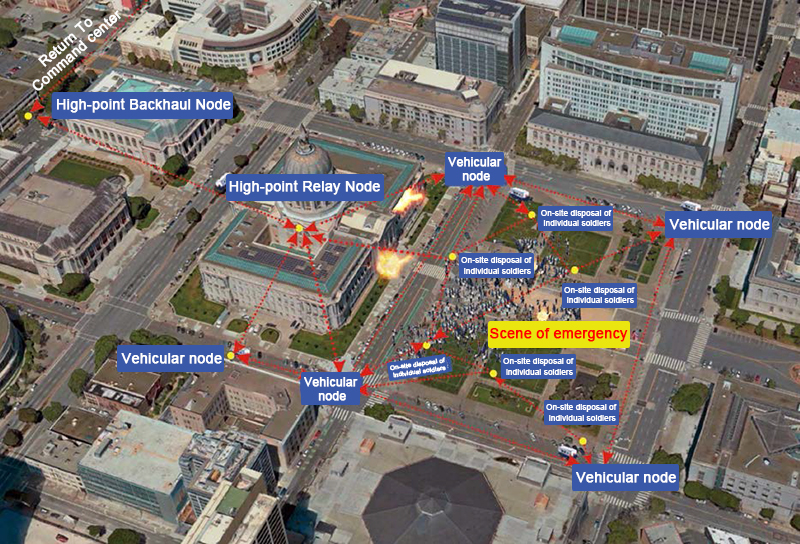City anti-terrorism and stability command
The fixed station node is deployed at the commanding or relative high point of urban buildings. In the case of building occlusion, it can effectively form a self-forming network with the vehicle station and the disposal individual soldier node and communicate with each other. At the same time, as a relay node to enhance or expand the wireless communication distance, the police can collect images at the scene of emergencies and send them back to the rear command center in the first time through multi-hop relay, providing the leaders at all levels with the scene situation and decision-making basis for timely scientific analysis and quick instruction.
The vehicle-mounted node can be deployed on mobile vehicles and is fast and accessible. It can not only be connected with vehicle-mounted wireless network, but also can be connected with the fixed station at the high point and the flexible area for disposal of individual soldiers, so as to build a “three-dimensional” wireless broadband network, which can meet the needs of “static medium communication” and “mobile medium communication” on-site emergency communication. At the scene of an emergency, it can not only serve as a front-line emergency police support center to provide information network and communication support for surrounding individual soldiers, but also serve as a small front-end command center to conduct unified command and scheduling for on-site police disposal.
Emergencies were collected at the same time, also can be the multiplex real-time video back, so that the front-line commander can omni-directional real-time visual control of the scene, but also on the GIS map real-time corresponding disposal of police cars, and disposal of individual movement and position, most likely on top of things, improve the disposal of police collaborative capabilities and operational efficiency. The individual soldier platform is distributed to the law enforcement police on the scene, which is convenient to go into the scene of an emergency or a dense crowd. The high-definition video can be sent back to the command center in time, so that the field commander can intuitively grasp the situation of the scene in real time, and can carry out two-way voice communication with other individual soldiers to achieve efficient local cooperation.

